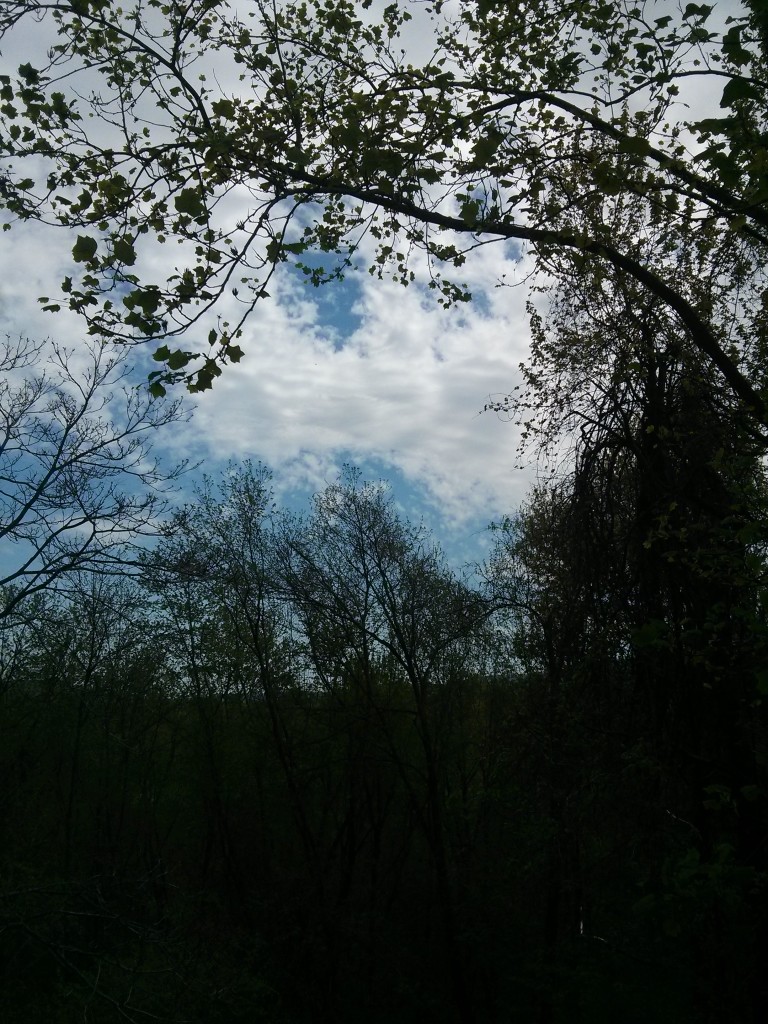In NY where I live we had an unusually cold April, with the weather only getting pleasant in the past couple of weeks. It is such a delight to have the windows open all day now, to look outside and feel like the grass and trees are right here with me, or to step outdoors with bare arms, or walk on my lawn with bare feet. I’ve often wondered if those of us who live with harsh cold wet winters appreciate good weather more than those from milder climates, where a nice day is the norm and not necessarily cause for celebration. Every neighbor I run into seems to have a smile now, or a cheerful comment on the weather.
When the day is pleasant, it’s much more inviting to be outside. Every vision improvement book mentions how much healthier natural full-spectrum sunlight is for the eyes and brain. New students often comment on this too, as they start to pay more attention to their seeing, what is easier to see for them and what isn’t. Meir Schneider is a well-known natural vision teacher from California who was considered blind until he started the Bates Method in his late teens, and now drives legally without any glasses. He’s written that his wife’s vision improved by 2 full diopters simply from reading outdoors in natural light, doing no other specific vision practices.
Most people notice they can see better under natural light, that the clarity is crisper (without being brittle or painful like from too-strong glasses), the colors richer with subtle hue differences more obvious, the depth deeper. This is certainly true if you’re looking without glasses or contacts, with no barrier to interfere between the environment and your receiving eyes. When I’m outdoors I pay attention to opening my eyes fully, letting go of any slight squinting I might be doing, being grateful for the sunlight, gently allowing my eyes and brain to see well rather then trying to force them to. Seeing clearly is meant to be normal and natural, not a struggle.
Yesterday I propped my large cardboard eye chart out in the front yard, since I haven’t practiced outdoors since last year. My loose goal for myself is to see 20/40 outside by the end of the summer, consistently, not just in flashes. The sun was bright and I was relaxed, but there was such a strong breeze blowing that the chart didn’t stay vertical for much more than a minute. I got lots of flashes which is always encouraging, and my indoor practice that evening was better than usual, so I’m going to continue this as much as I can fit it in. Just like an athlete doesn’t stay in shape unless he or she works out regularly, I need to practice seeing throughout my day (indoors and out!) if I want to maintain my good vision, and especially if I want to improve it.
With the flowering trees and new blossoms in gardens, there are little and big splashes of delightful colors to look at, and so many shapes and curves and textures! This is much more satisfying to my spirit than looking at the eye chart! There’s also always a slight movement to objects in Nature, whether it be the breathing of an animal, or the quiver of petal or wings. I can feel the Life, and it seems my eyes connect to that and feel more alive themselves in the looking.
In workshops with Peter Grunwald, the developer of the Eyebody Method of vision improvement, he said practicing seeing depth is essential for nearsighted folks who have worn strong glasses for a long time. Eyeglasses flatten natural depth, and the eyes and brain need to re-learn how to see this naturally. I am pleased to report that visual depth seems to be getting deeper for me, maybe because I pay attention to this almost every time I walk outdoors. I’ll look into a small tree and feel surrounded by the branches, the depth is so apparent. I probably seem like a child hypnotized by a flower, so I’m glad my neighbors are tolerant! I think one of my favorite ways to practice seeing depth is to look up at clouds, sometimes piles upon piles of white, or of shades of gray or blue or lavender. When I first started vision improvement, I assumed clouds were 2-dimensional!
Whatever your season or surroundings, I encourage you to connect with the sights of Nature near you. It’s good vision practice, it’s fun, and it’s always changing.
I wore strong glasses, then contact lenses, from age 5 into my 40s. While making many mistakes, eventually l learned how to improve the way I use my eyes and to see in a more relaxed, healthy manner. It is my pleasure to coach others to do the same. Visit me at https://NancyLNeff.com.

